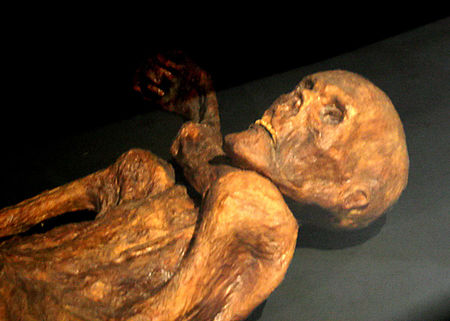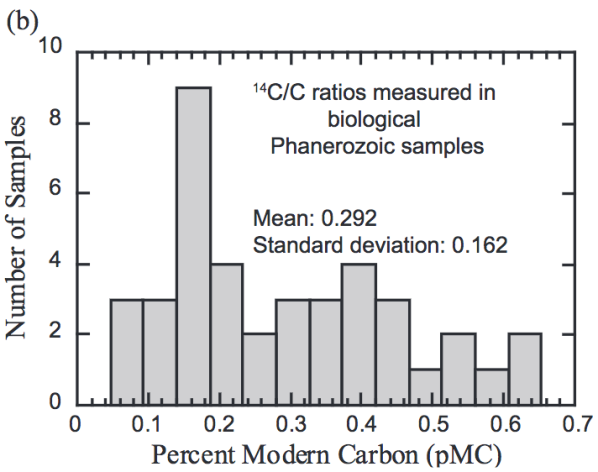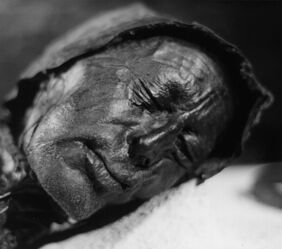Have you actually read Mary Schweitzer’s original 2005 paper? She had to soak the samples in demineralising solution for a week to get at the stuff.
This must be some new meaning of the word “unpermineralised” of which I was not previously aware.
Look, we know what soft tissue looks like after a few thousand years. It looks like this:

Or like this:
That is the state of preservation that you would expect to find from dinosaur carcasses if they really were only a few thousand years old. We would have sequenced the entire T-Rex genome by now. Why haven’t we?
There’s one simple reason why this isn’t true. The amount of carbon-14 in ancient samples varies widely.
Here are the graphs from the RATE project reports:


If the radiocarbon levels really were intrinsic rather than contamination, the amounts in the oldest samples would tightly cluster round some value significantly larger than the standard deviation and significantly larger than known, well studied and measured contamination vectors. A peak with a spread from, say, 2-2.5% might be something to write home about. A spread from 0-0.1 or 0.1-0.7 … not so much.
The levels would be the same for Precambrian coals as for Phanerozoic coals. The fact that Phanerozoic samples give about five times as much radiocarbon as Precambrian coals is fully accounted for by the fact that they have to undergo more complex sample preparation to extract cellulose from wood or collagen from bone. The extra processing steps introduce more contamination.
The levels would be the same for coals and diamonds. All diamonds would have very similar amounts of radiocarbon. This is not what we find in reality. The articles that you linked to are dismissive of the suggestion that carbon-14 could come from irradiation from nearby uranium, but the fact of the matter is that the correlation between nearby uranium and radiocarbon in diamonds is observable, testable, repeatable and measurable even by YEC standards of “observable, testable, repeatable and measurable.”
